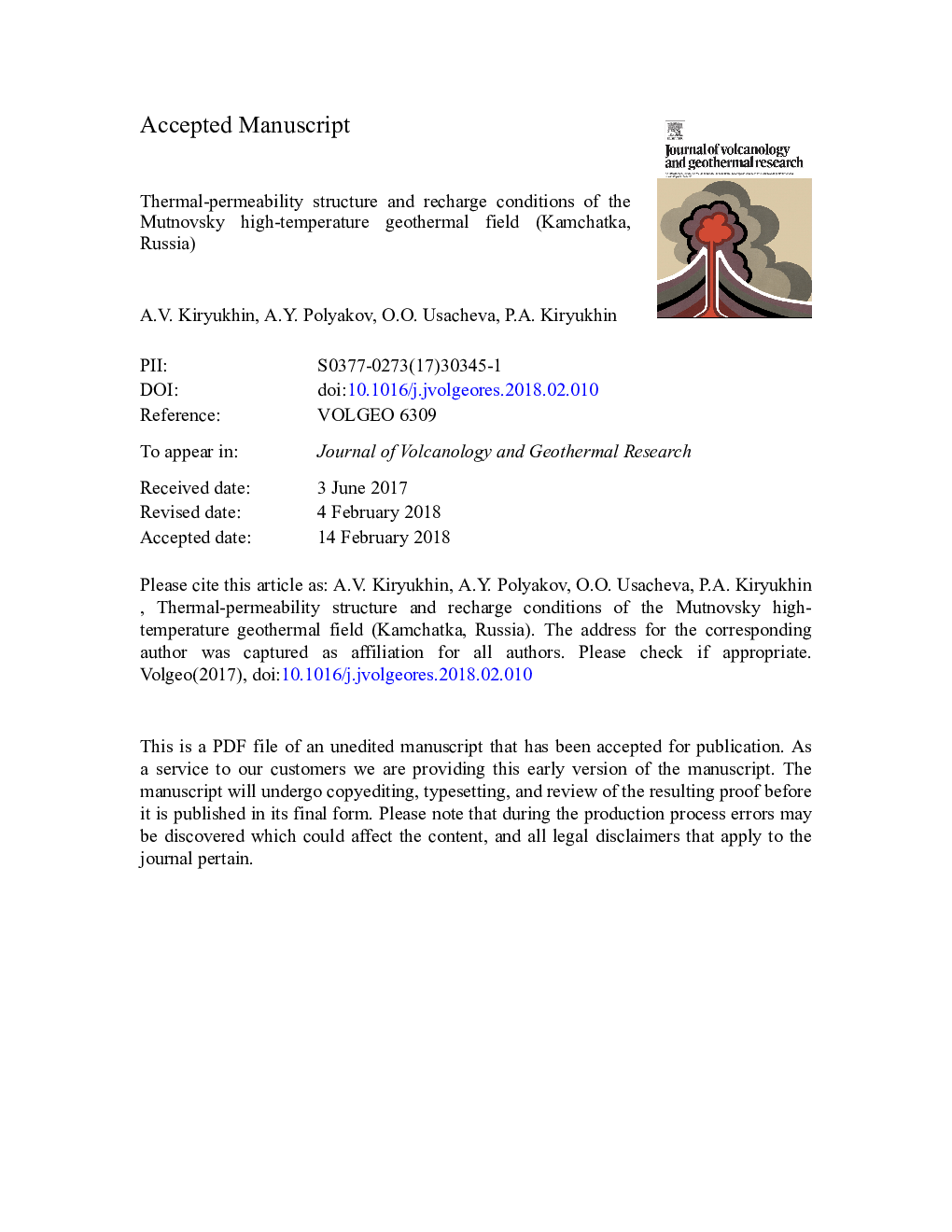| Article ID | Journal | Published Year | Pages | File Type |
|---|---|---|---|---|
| 8911307 | Journal of Volcanology and Geothermal Research | 2018 | 42 Pages |
Abstract
The Mutnovsky geothermal area is part of the Eastern Kamchatka active volcano belt. Mutnovsky, 80 kY old and an aging strato-volcano (a complex of 4 composite volcanic cones), acts as a magma- and water-injector into the 25-km-long North Mutnovsky extension zone. Magmatic injection events (dykes) are associated with plane-oriented MEQ (Micro Earth Quakes) clusters, most of them occurring in the NE sector of the volcano (2 Ã 10 km2) at elevations from â4 to â2 km, while some magmatic injections occur at elevations from â6.0 to â4.0 km below the Mutnovsky production field. Water recharge of production reservoirs is from the Mutnovsky volcano crater glacier (+1500 to +1800 masl), which was confirmed by water isotopic data (δD, δ18O) of production wells at an earlier stage of development. The Mutnovsky (Dachny) 260-310 °C high-temperature production geothermal reservoir with a volume of 16 km3 is at the junction of NNE- and NE-striking normal faults, which coincides with the current dominant dyke injection orientation. TOUGH2-modeling estimates of the reservoir properties are as follows: the reservoir permeability is 90-600 e-15 m2, the deep upflow recharge is 80 kg/s and the enthalpy is 1420 kJ/kg. Modeling was used to reproduce the history of the Mutnovsky (Dachny) reservoir exploitation since 1983 with an effective power of 48 MWe by 2016. Modeling also showed that the reservoir is capable of yielding 65-83 MWe of sustainable production until 2055, if additional production drilling in the SE part of the field is performed. Moreover, this power value may increase to 87-105 MWe if binary technologies are applied. Modeling also shows that the predicted power is sensitive to local meteoric water influx during development. Conceptual iTOUGH2-EOS1sc thermal hydrodynamic modeling of the Mutnovsky magma-hydrothermal system as a whole reasonably explains its evolution over the last 1500-5000 years in terms of heat recharge (dyke injection from the Mutnovsky-4 funnel) and mass recharge (water injection through the Mutnovsky-2 and Mutnovsky-3 funnels) conditions as previously mentioned.
Related Topics
Physical Sciences and Engineering
Earth and Planetary Sciences
Geochemistry and Petrology
Authors
A.V. Kiryukhin, A.Y. Polyakov, O.O. Usacheva, P.A. Kiryukhin,
